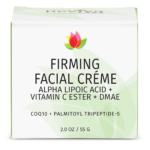Beta-Carotene
Beta-Carotene is a brightly colored, orange pigment found abundantly in plants and fruits, especially carrots and colorful vegetables. It belongs to a group of pigments called carotenoids, which are responsible for the vivid colors in many fruits and vegetables. Beta-Carotene serves as a precursor to Vitamin A (retinol) in the human body, meaning it is converted into Vitamin A as needed. This conversion is vital for maintaining good vision, immune system function, and skin health. Additionally, Beta-Carotene is a powerful antioxidant, protecting cells from oxidative damage caused by free radicals. Its antioxidant properties also contribute to the prevention of chronic diseases and support overall health. Due to its health benefits and vibrant color, Beta-Carotene is widely used in dietary supplements, food colorings, and cosmetics.
β-Carotene (beta-carotene) is an organic, strongly colored red-orange pigment abundant in fungi, plants, and fruits. It is a member of the carotenes, which are terpenoids (isoprenoids), synthesized biochemically from eight isoprene units and thus having 40 carbons.
 | |
 | |
 | |

| |
| Names | |
|---|---|
| IUPAC name
β,β-Carotene
| |
| Systematic IUPAC name
1,1′-[(1E,3E,5E,7E,9E,11E,13E,15E,17E)-3,7,12,16-Tetramethyloctadeca-1,3,5,7,9,11,13,15,17-nonaene-1,18-diyl]bis(2,6,6-trimethylcyclohex-1-ene) | |
| Other names
Betacarotene (INN), β-Carotene, Food Orange 5, Provitamin A
| |
| Identifiers | |
3D model (JSmol)
|
|
| 3DMet | |
| 1917416 | |
| ChEBI | |
| ChEMBL | |
| ChemSpider | |
| ECHA InfoCard | 100.027.851 |
| EC Number |
|
| E number | E160a (colours) |
| KEGG | |
PubChem CID
|
|
| UNII | |
CompTox Dashboard (EPA)
|
|
| |
| |
| Properties | |
| C40H56 | |
| Molar mass | 536.888 g·mol−1 |
| Appearance | Dark orange crystals |
| Density | 1.00 g/cm3 |
| Melting point | 183 °C (361 °F; 456 K) decomposes |
| Boiling point | 654.7 °C (1,210.5 °F; 927.9 K) at 760 mmHg (101324 Pa) |
| Insoluble | |
| Solubility | Soluble in CS2, benzene, CHCl3, ethanol Insoluble in glycerin |
| Solubility in dichloromethane | 4.51 g/kg (20 °C) = 5.98 g/L (given BCM density of 1.3266 g/cm3 at 20°C) |
| Solubility in hexane | 0.1 g/L |
| log P | 14.764 |
| Vapor pressure | 2.71·10−16 mmHg |
Refractive index (nD)
|
1.565 |
| Pharmacology | |
| A11CA02 (WHO) D02BB01 (WHO) | |
| Hazards | |
| GHS labelling: | |

| |
| Warning | |
| H315, H319, H412 | |
| P264, P273, P280, P302+P352, P305+P351+P338, P321, P332+P313, P337+P313, P362, P501 | |
| NFPA 704 (fire diamond) | |
| Flash point | 103 °C (217 °F; 376 K) |
Except where otherwise noted, data are given for materials in their standard state (at 25 °C [77 °F], 100 kPa).
| |
Dietary β-carotene is a provitamin A compound, converting in the body to retinol (vitamin A). In foods, it has rich content in carrots, pumpkin, spinach, and sweet potato. It is used as a dietary supplement and may be prescribed to treat erythropoietic protoporphyria, an inherited condition of sunlight sensitivity.
β-carotene is the most common carotenoid in plants. When used as a food coloring, it has the E number E160a. The structure was deduced in 1930.
Isolation of β-carotene from fruits abundant in carotenoids is commonly done using column chromatography. It is industrially extracted from richer sources such as the algae Dunaliella salina. The separation of β-carotene from the mixture of other carotenoids is based on the polarity of a compound. β-Carotene is a non-polar compound, so it is separated with a non-polar solvent such as hexane. Being highly conjugated, it is deeply colored, and as a hydrocarbon lacking functional groups, it is lipophilic.










